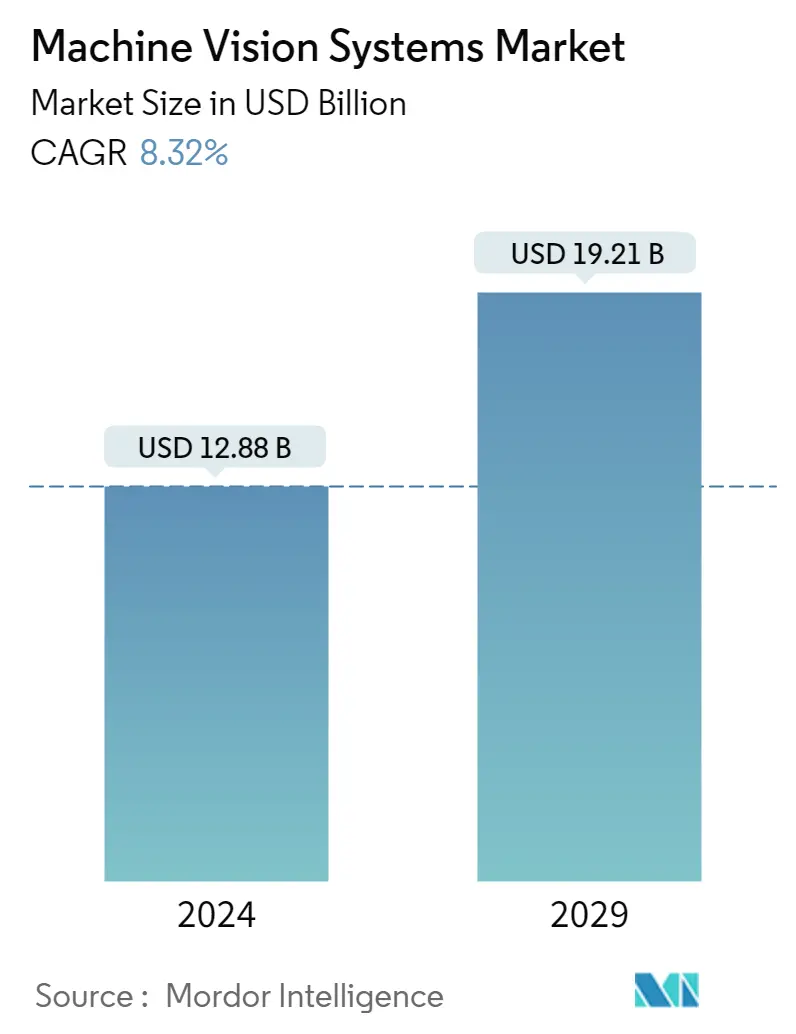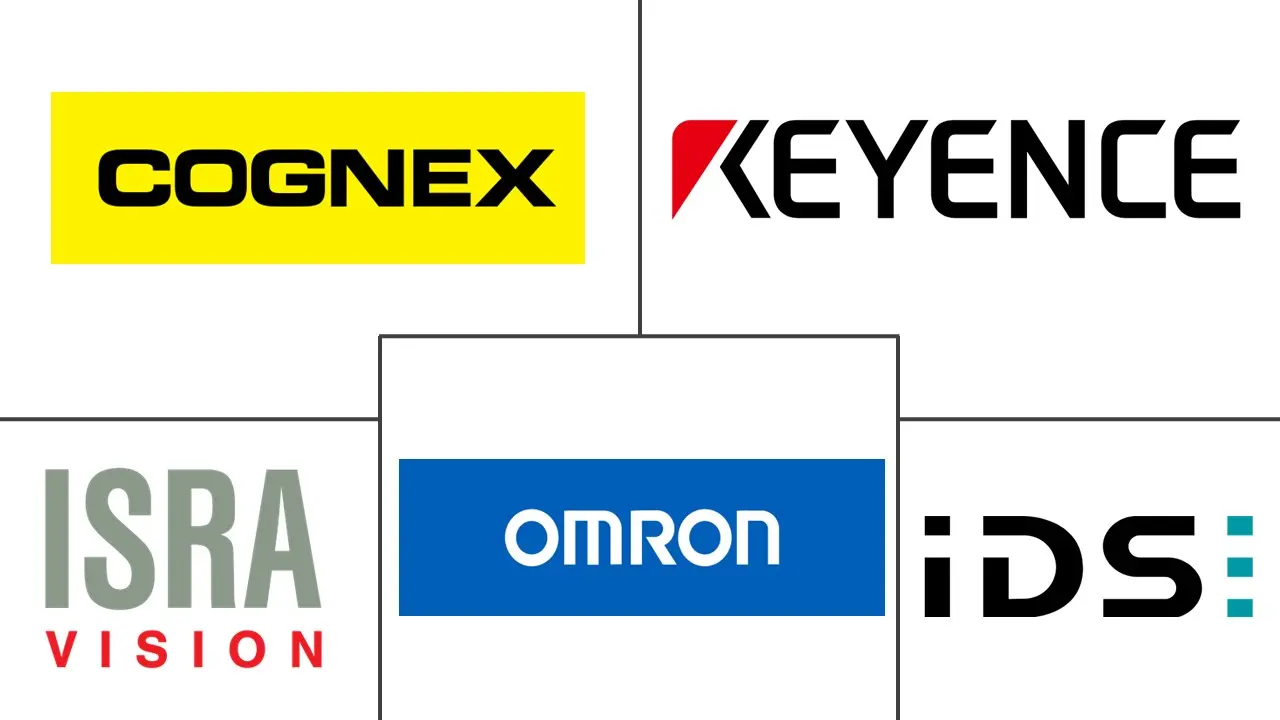Market Size of Machine Vision Systems Industry

| Study Period | 2019 - 2029 |
| Market Size (2024) | USD 12.88 Billion |
| Market Size (2029) | USD 19.21 Billion |
| CAGR (2024 - 2029) | 8.32 % |
| Fastest Growing Market | Asia Pacific |
| Largest Market | Asia Pacific |
Major Players
*Disclaimer: Major Players sorted in no particular order |
Need a report that reflects how COVID-19 has impacted this market and its growth?
Machine Vision Systems Market Analysis
The Machine Vision Systems Market size is estimated at USD 12.88 billion in 2024, and is expected to reach USD 19.21 billion by 2029, growing at a CAGR of 8.32% during the forecast period (2024-2029).
Machine vision systems rely on digital sensors protected inside industrial cameras with specialized optics to acquire images so that computer hardware and software can process, analyze, and measure various characteristics for decision-making.
- Over the past few decades, industrial automation has evolved gradually, with few changes in market structure. But the pace of change is accelerating thanks to technology disruptions and macro trends such as reshoring, a global skilled-labor shortage, and environmental, social, and governance (ESG) efforts. In the recent past, the first wave of the COVID-19 pandemic created a slowdown in much of manufacturing. However, it was only temporary. As manufacturing returned, there was a boom in production. As companies began to return to work while maintaining social distancing as the new norm, there was an increased need for vision systems and automation systems to help fill the void, with more workers being unable to occupy the same workspace or unable to come in.
- The potential of industrial automation is most obvious in the tiny percentage of manufacturing sites known as “digital lighthouse factories.” These plants are leading the way in automation. A survey by the World Economic Forum found that 93% of lighthouse factories had gotten a growth benefit from their embrace of automation. Most of the growth benefit came from the ability to increase their output, with automation leading to new revenue streams for a handful of factories.
- As a result, machine vision is experiencing a surge in adoption, with organizations actively seeking more ways to deploy this transformative technology across their operations. Decision-makers are continually searching for ways to enhance productivity, quality, and traceability, and as a result, are identifying more applications on their manufacturing and logistics lines that can be improved with machine vision.
- Driving this growth is the need for improved product inspection and quality control in the manufacturing sector, as well as the growing demand for smarter collaborative robots in manufacturing and warehousing. Automation and machine vision technologies also improve operational efficiency and productivity, reduce production costs, and expand worker capabilities.
- Another factor driving growth is the need for improved product inspection and quality control in the manufacturing sector, as well as the growing demand for smarter collaborative robots in manufacturing and warehousing. Automation and machine vision technologies also improve operational efficiency and productivity, reduce production costs, and expand worker capabilities.
- However, the current market is experiencing a deficiency in adaptable software that effectively integrates high-quality graphics and user-friendly interfaces with code-centric algorithms. Thus, due to the aforementioned shortage of proficient individuals, the market encounters a hindrance in its expansion.
